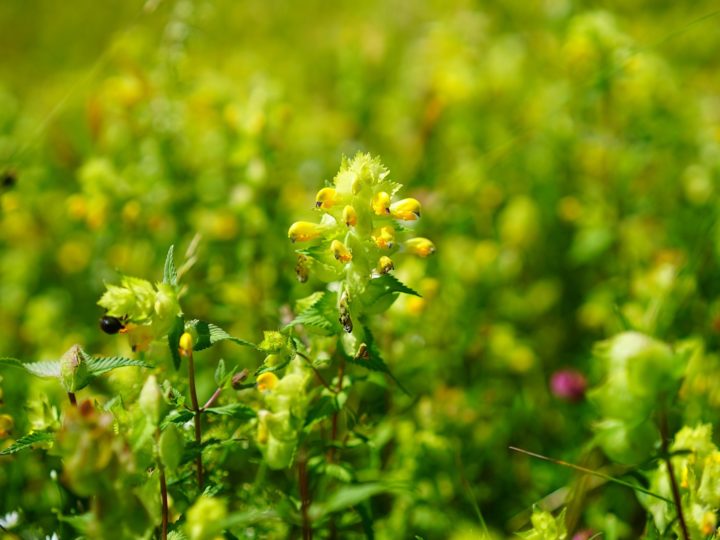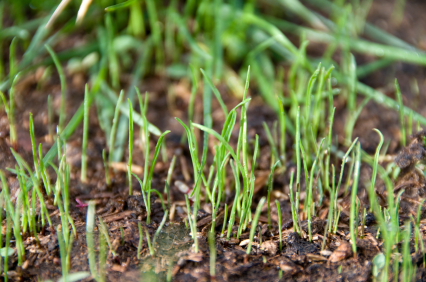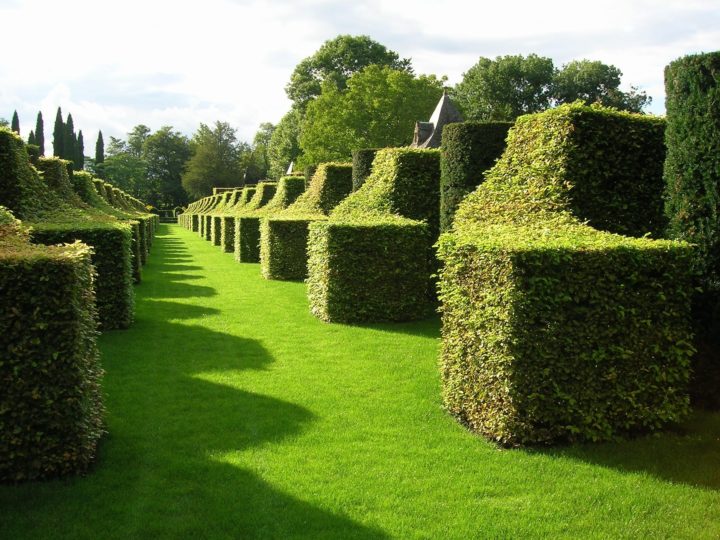
In the minds of many of us there lurks a vision of the ideal lawn. Perfectly flat, a uniform green carpet cut extremely short and banded in perfect stripes from mowing. If that is your vision you have been seduced by bentgrass – the gold-standard of the British lawn.
There are actually three species of bent grass, each with distinct characteristics, but all of them have very fine leaves and produce a lawn that can be mowed shorter than any other grass.
Golfers may not be able to name it, but they will be very familiar with Creeping Bent – Agrostis stolonifera – which as its names suggest produces many stolons that spread above the ground across the soil surface. This produces a very dense growth that will choke-out most other grasses and even weeds. For this reason it is favoured by golf-course managers for the greens especially since it can also be mowed to as little as 3 mm.
However in home lawns it will choke-out other grasses giving it weed properties, since its relatively pale colour stands out against darker grasses and makes for a piebald effect.
In addition the stolons encourage the development of thatch which is an undesirable condition causing the lawn to feel spongy and appear light brown just below the green blades. Very close mowing and special care is needed to control thatch.
Agrostis capillaris – Common Bent, is the type of bent found mostly on old estate lawns. It may also be used on golf courses. It can still be mowed very closely, but it does not have the same problems of stolon production found with Creeping Bent, although some thatch may still be produced. In North America it is called ‘Colonial Bentgrass’.
This species is a good choice for home gardeners who use a reel mower and wish to achieve a highly groomed appearance on their lawn. It is a slow grass to establish but the end result is worthwhile and the maintenance is less than for creeping bent.
Velvet Bent – Agrostis canina, is the third type of bentgrass grown and it has the finest leaves of all. It needs cool, moist growing conditions and fertile soil, so should only be grown in areas where these conditions are natural. It is a very light green colour.
There has been increased interest in Velvet Bent in recent years. It can be mowed very closely and produces a ‘faster’ green than other types of bentgrass. It shows greater winter survival after cold weather and snow, so it has become popular in Finland and other Scandinavian countries. Although slower to recover from heavy use it requires less frequent mowing than other types of bentgrass, which reduces management costs on a golf course.
However it produces even more thatch than creeping bentgrass, so it is not a good choice for home lawns as maintenance will need to be very high for good results.
Establishing a Bentgrass Lawn
Since the goal is a perfectly flat surface the seed bed needs to be prepared very well. After the normal digging and levelling, special attention should be given to achieving an even level of compaction across the whole area. Sinking of areas once the lawn is established will destroy the desired end-result. Particular attention should be given where trees or shrubs have been removed, since the deeper digging in those areas can cause future sinking.
Bentgrass prefers acid soil conditions (pH5.5 to 6.5) so avoid using lime during site preparation. If you live on chalk choose another grass species.
Once fertilized and roughly levelled a final levelling is needed. Use a plank as long as possible and pull it across the area – two people will make the job easier on a larger lawn – to eliminate all minor irregularities. Repeat this process until the area is very level and uniformly firm.
Seed should be sown at a rate of 5 g per m2. The grass seed is very fine and it may be necessary to mix it with some fine sand to achieve an even seed distribution. A thin mulch of fine peat-moss may be helpful in retaining moisture as the tiny seeds cannot be buried in the soil. A constant level of moisture should be maintained by frequent light watering.
Fertilizing should be done mostly in spring and autumn. Because the grass is mowed very short it will not be able to manufacture enough food reserves for winter if it is over-fertilized in summer, as the grass will produce leaves instead of storing food reserves. The result can be greater winter damage and death, meaning that the lawn will need to be over-seeded in the spring.
5 Comments
I have bought bent grass seed from you in the
Past, as I wanted a grass I could cut very short.
However I find if cut short it goes brown. My
Lawn is in full sun and use the fertiliser I
bought from you. Could you recommend a fine
grass that I can cut very short and look like a
Bowling greenAuthor
Hi Aoife, which mixture was it you have used? And how low are you setting your mower? Let us know and we will try our best to advise!
Hi. I’m looking to buy a bent grass blend (80% HIGHLAND certified Bentgrass, 20% KROMI certified Creeping Bent) – which fertiliser should I use with this and should I fertiliser when initially sowing? Many thanks
Author
Hi Michael,
We have a similar mix with our Golf Greens mix – if you drop us an email on [email protected] we’ll let you know about varieties etc…
Look forward to hearing from you.
My local golf course has the perfect putting green
I asked what seeds were used , I was told POA and Bent grass
Would you advise what are the best types to use.
I want to use on my gardens lawns




